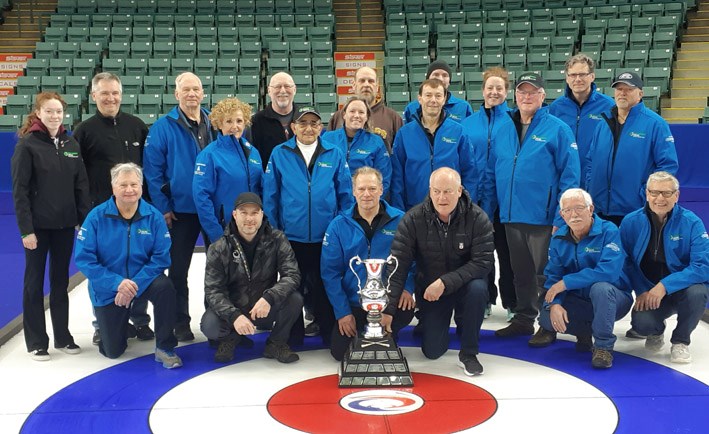Dust off your brooms, curling season is just around the corner.
League play at the Prince George Golf and Curling Club starts on Monday, Nov. 2.
The pandemic which ended the season prematurely last March and forced cancellation of the Women’s World Championship at CN Centre the day before it was supposed to start has thrown a few new wrinkles at curling clubs around the country.
The new rules to conform to provincial health regulations require clubs to step up cleaning protocols and disinfect high-touch surfaces while encouraging physical distancing whenever possible. Curlers are not allowed to share equipment and the handles of curling stones must be sprayed and wiped with sanitizer in between draws.
No more than 50 people are allowed on the ice at any one time, so that means the Prince George club will only be opening four sheets of ice, half its capacity. With eight four-person teams in action that would bring the number up to 32 curlers. Fewer teams in action at one time means leagues will have to have more draw times scheduled.
The most sweeping change in the rules pertains to the sweepers. Only one player per team is allowed to sweep the ice on each shot.
“We will have to keep everybody distanced to some degree and for curlers they’ve changed some of the rules around sweeping and interacting with people,” said PGGCC general manager Don McDermid. “The big thing is only one person can sweep a rock at time and the sweepers will have to take turns. They’ll have to be more efficient or work harder.”
Change rooms and other public rooms will remain closed until the current Phase 3 restrictions are removed and there’s a shift to near-normalcy with a move to Phase 4. The viewing area will remain closed but the games can be seen from the restaurant/lounge.
All five of the club’s usual bonspiels, including the Kelly Cup, are on hold.
The PGGCC is offering league play for men, women, seniors, doubles and beginners and for teams in the Auto Magic/Curtis Elite commercial league, as well as two-person-per-team sturling league and the junior program. The Little Rocks league usually offered on Saturday afternoons has been deferred until January.
As of Monday, about 200 curlers were registered, about half of the 400 the club had in the 2019-20 season, but McDermid expects a flood of last-minute sign-ups and predicts the numbers will only be slightly less than last year. Curlers must sign participation waiver forms when they pay their fees and will have to submit those forms before they can play.
“We’ve tried to keep our protocols pretty much the same as every other curling club in the province,” said McDermid, who encourages curlers to go to the Curl BC website - curlbc.ca – for full details on the new regulations.
The additional staff required to provide cleaning as well as restrictions on crowd sizes have added operational costs to the club but McDermid said those additional costs won’t be passed on to the curlers through higher fees.
With its November startup, curling season is about three weeks later than usual. McDermid said staff needed the extra time to make the switch after a busy summer overseeing the club’s golf operations. The PGGCC booked more than 30,000 rounds of golf, up significantly over the usual 26,000-28,000 rounds in one season.
“People were unable to play other sports so they got out their golf clubs and came out and played,” said McDermid. “Our food and beverage (revenue) was down dramatically but our golf participation was up around 15 per cent. Any gains there were offset by losses on the food and beverage side.”



.png;w=120;h=80;mode=crop)